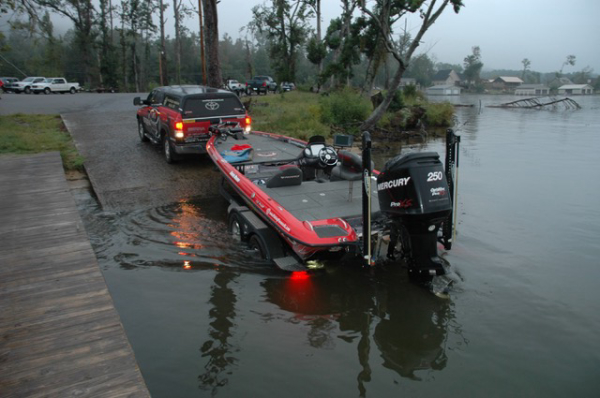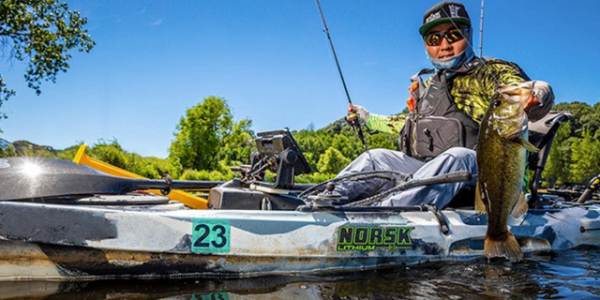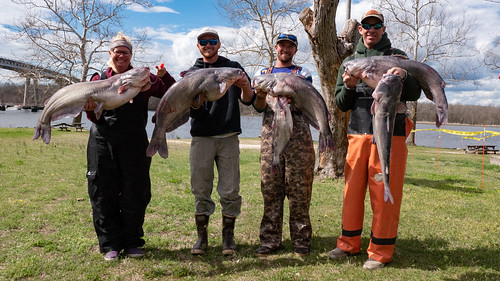Boat Launching Made Easy
— Frank Sargeant
I spend a lot of time these days on Lake Guntersville in northern Alabama, which has to have some of the busiest boat ramps in America during the spring, summer and fall bass tournament seasons. It’s routine for some ramps to have 50 to 75 boats launched in the first hour of daylight as anglers from all over the country come to the big lake for tournaments and for fun fishing.
The amazing thing about it is that the vast majority of this action goes off very smoothly and with minimal backup, because most of the guys who come here are hard-core veterans of hundreds of previous launches and they do what works best to keep the line moving.
It also helps that most of these guys are on the water for serious fishing, and there’s no alcohol aboard most boats. The ramp arguments and occasional fisticuffs that are becoming pretty common in coastal south Florida and many other places are rarely seen here.
Given that, as we approach the peak of the boating season across most of the nation, it might be a good idea to take a look at how it’s done right, with minimal damage to equipment or egos, and with no need for EMS assistance.

First, of course, is to be sure your boat is ready to launch when your turn in line comes—drain plug in, tie downs released, motor trimmed up, bow line in place, key in the boat’s ignition, and all the stuff from the truck already moved to the boat.
Second, when your turn comes, back in just far enough to float the transom, again make sure you’re got a bow line on the bow eye, and then unhook the winch strap.
The boat should slide back a bit and float free, but if not, give it a push and you’re afloat.
Alternatively, if you’ve got a pal along, he/she can get into the boat before you launch, trim down the engine and start the motor as soon as the stern floats, and then back off the trailer when you disconnect the winch strap.
Third, get your truck and trailer off the ramp immediately after your boat is launched and tied to the dock—don’t stop to talk with others or return a call; others will be waiting. Park in the designated slots, then head back to the boat for your day on the water.
When you return, loading is the reverse of launching.
We’ll assume that the captain has had nothing to drink here—remember, the BUI penalties are the same as DWI charges ashore in most state. And of course even a couple of beers on a hot day can make everything you try a lot more difficult.
One critical part of reloading is getting the trailer in to just the right depth.
With drive-on trailers, which are now almost universal, back in far enough to wet the bunks, then pull back out until the rear of the bunks are just awash. Wetting the carpet makes it a lot easier for the boat to slide up into place.
Don’t go in far enough for the bunks to be sunk so deep that the bottom of the boat doesn’t make contact with them when you drive on the trailer, or the boat is very likely to load whopper-jawed, hanging over the fender on one side.
Just center the bow of the boat on the winch stand of the trailer, ease forward slightly until you feel the resistance of the rollers against the bottom and then apply just enough power to force the boat up on the bunks.
With the trailer at the right depth, this is almost a no-brainer. But too deep and it’s a pain, too shallow and it’s impossible.
Attach the winch hook and secure the boat, then pull off the ramp and completely clear of the launching area to secure the boat.
Pull the drain plug immediately and stow it in a safe place. Draining gets rid of invasive weeds and shellfish that might hitch a ride to another lake if left in your bilge. Add your tie downs, pull out any gear that might blow out and stow it in the truck and you’re ready for the drive home.
Wear Your Life Jacket at Work Day
On other fronts, this Friday is Wear Your Life Jacket at Work Day.
I like the sentiment behind this promotion—all of us should wear our PFD’s anytime our boats are underway–but it must take a brave individual to do this when going to work in an office in New York or L.A., don’t you think?
And really, if you went into your lawyer’s office and he was sitting there in an orange Mustang inflatable, what would you think?
Personally, I’m going to wear mine on my boat anytime the engine is running, but I think I’ll pass on wearing it ashore.
Ray Scott and PFD’s
An aside, in light of Ray Scott’s recent passing: When inflatable PFD’s were a new thing, Ray was trying to wangle a sponsorship deal with the first company to bring them out, and he invited a bunch of us outdoor writer types to a lake near Montgomery, ostensibly to shoot some editorial photos of bass fishing at the lake.
But as soon as we arrived at the spot where we were going to shoot, Ray stepped right off the bow of the boat he was in, fully clothed.
His famed cowboy hat floated—Ray went down and down—and then BALOOEY, he popped to the surface like a balloon as the PFD he was wearing instantly inflated. Every camera started clicking.
The company got a ton of free press and Ray got yet another sponsorship deal, at the cost of a new hat.






